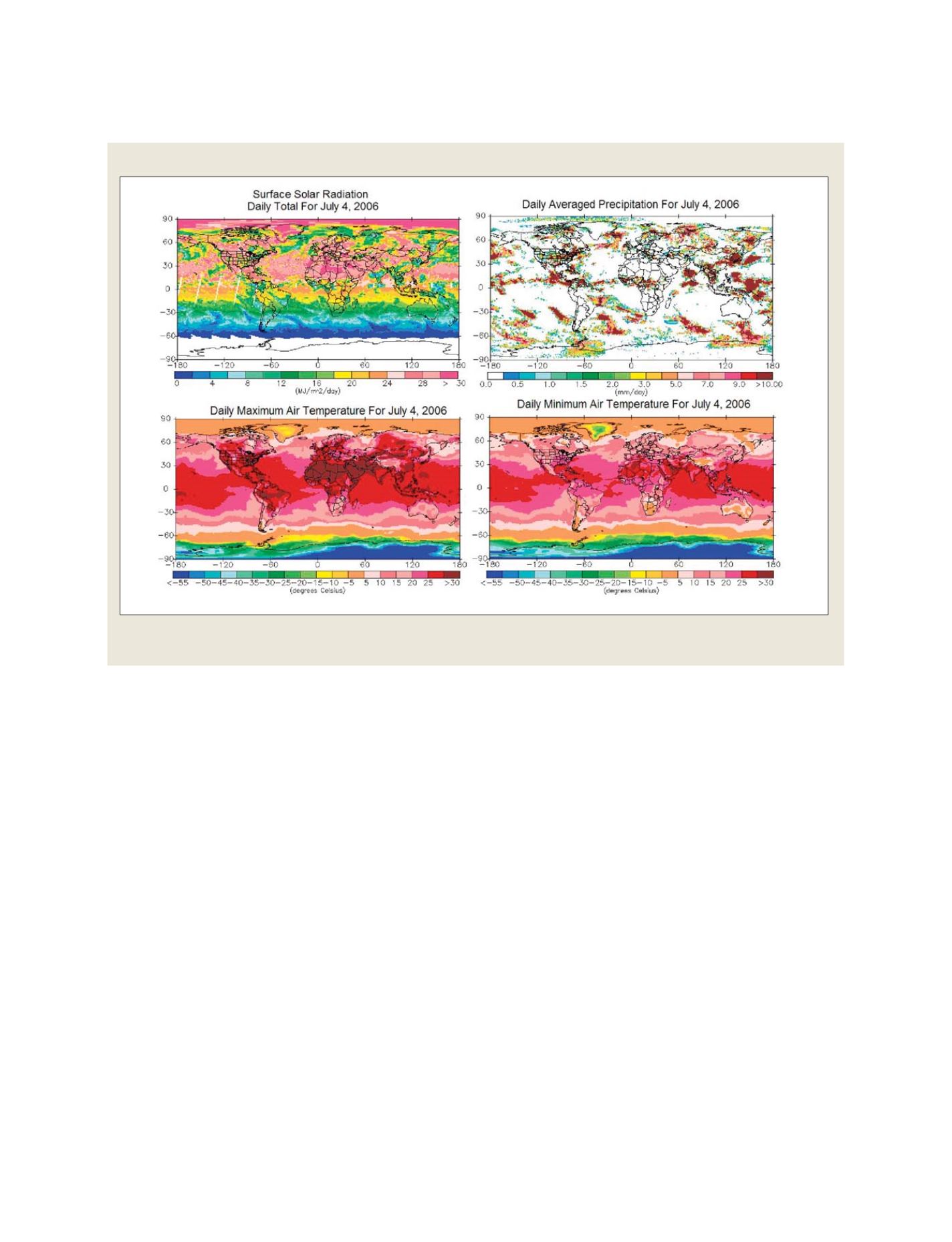

[
] 196
ered its first version of a website dedicated to providing
agricultural industry access to climatological information
not readily available on a consistent basis worldwide.
Solar parameters were adapted to units used in agricul-
tural modeling for ease of use by end users. The prototype
project conducted earlier this year was deemed success-
ful and further work is planned. Given the rapid
expansion of ethanol production in the US, this collabo-
ration can contribute to the optimization of corn-based
ethanol production and to balancing the demand between
food, feed and fuel with other crops.
Energy efficiency
The Energy Management Program is working to support
the sustainable buildings design and engineering indus-
try by collaborating with partners and developing new
parameters from NASA derived datasets specifically
designed to meet engineering needs. A Sustainable
Buildings website was delivered in 2006
(http://power.larc.nasa.gov/buildings). This interface
contains new plots and figures that architects and heating,
ventilation and air conditioning engineers may use in the
energy efficient design of buildings. Also, specialized
statistics including US Department of Energy consistent
climate zones were defined from the datasets.
distribution of global data sets of these resource assessment products
in collaboration with the US Geological Survey.
We are collaborating on an International Energy Agency (IEA) task
entitled ‘Solar Resource KnowledgeManagement.’ This activity uses satel-
lite-derived datasets to add value to the standardization and structure
(e.g. improved spatial and temporal coverage) of energy products for use
worldwide and which are easily accessible to end users. The project’s
goals are inherently consistent with the GEOSS 10-year Implementation
Plan for solar irradiance data sets. The task is establishing standardized
methods for evaluating satellite based solar energy information and devel-
oping advancedmethods to disseminate that information, while fostering
the development and improvement of the capability for current and future
satellite systems to provide such information. Planned outcomes of this
activity will reduce the cost and planning of solar energy system deploy-
ment and improve efficiency of solar energy systems bymore accurate and
complete resource information.
Biofuels
NASA has partnered with two universities and with the US Department
of Agriculture-Agricultural Research Service to integrate NASA-derived
measurements into wheat and maize crop yield models to test from
improvements to their predictive capacity. These agricultural decision
support systems typically require timely access to meteorological para-
meters such as solar irradiance, temperature and precipitation, and
have previously relied on ground-based networks. The Program deliv-
NASA Earth Science products for energy decision support
Sample solar irradiance and meteorological products from NASA science research adapted for testing in crop models. In the example, daily averaged
parameters for 4 July 2006 are presented for solar irradiance, average precipitation, and daily maximum and minimum temperatures
Source: NASA
S
OCIETAL
B
ENEFIT
A
REAS
– E
NERGY
















